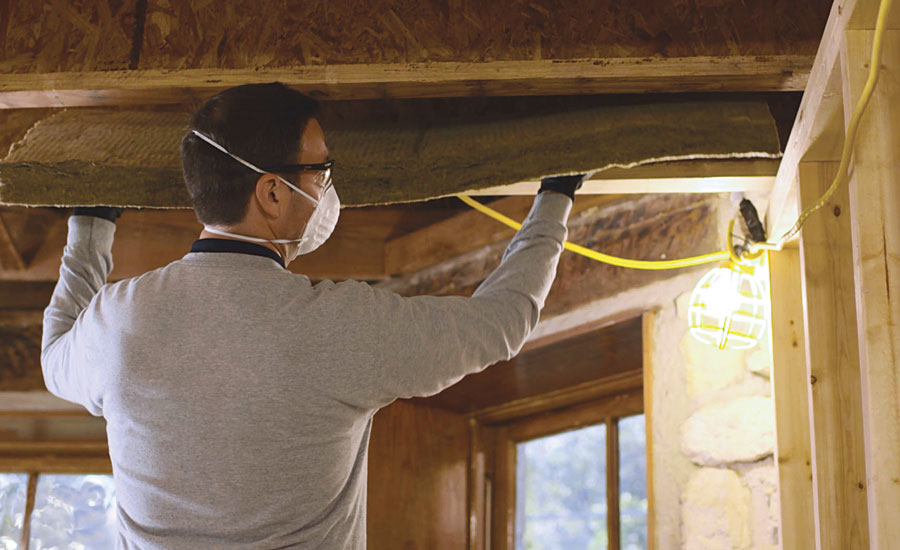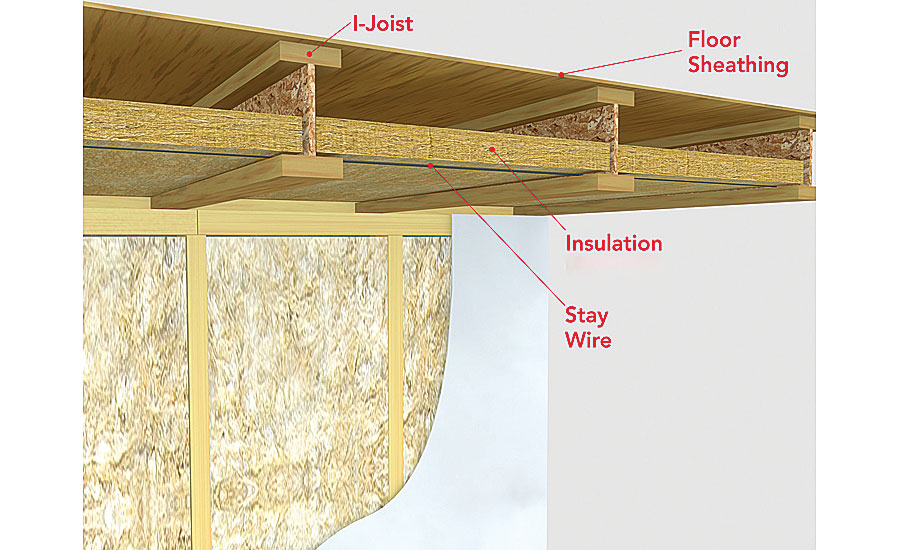Fire Protection with I-Joists and Stone Wool in Residential Construction








As the use of the new applications grows, we learn about the benefits and drawbacks with each approach and ultimately, with our increased understanding and knowledge, code requirements change to reflect the safest ways to build and remodel homes.
I-joists are a perfect example of an application that has dramatically changed the building industry and in turn, has driven changes to the building code requirements. Invented in 1969, I-joists are engineered wood joists that offer many benefits while eliminating many problems that regularly arise with conventional wood joists. For example, I-joists are capable of supporting heavy loads with substantially less lumber than solid wood joists. In addition, they are far less prone to bow, crown, twist, cup or split than traditional lumber joists. Problems with squeaky floors are far less prevalent with I-joists because of their overall dimensional stability.
A Solution that Meets Requirements
Because of the benefits of I-joists, their use and application have grown dramatically. In the Fundamentals of Building Construction, Volume 4, authors Iano and Allen state that approximately 50 percent of all wood light framed floors used I-joists. However, one of the drawbacks that have become evident is that I-joists are prone to fail sooner in fires than conventional joists. In response, the 2012 IRC Section R 501.3 code requirements were changed to address the issues related to fire safety.
As of February 2016, local jurisdictions in Arkansas, California, D.C., Florida, Georgia, Idaho, Kentucky, Louisiana, Minnesota, Montana, Rhode Island, South Carolina, Utah, Virginia and Washington have officially adopted the 2012 edition of the more stringent fire protection of I-Joist code. Research firm Forest Economic Advisor projects about 60 percent of jurisdictions will do so by 2017.
There are a variety of options available for home builders and remodelers to use to meet the new code requirements when building with I-joists. For example, basement ceilings can be finished with drywall, or a sprinkler system can be installed. However, both of these options come with substantial budget implications for the homeowners and, in the case of sprinkler systems, home builders are obligated to change their traditional methods of construction. Fortunately, stone wool insulation batts provide a solution that meets the requirements of the code.
Stone wool is simply a type of insulation that is comprised of basalt rock and steel slag, which is a recycled by-product of the steel industry. To manufacture stone wool, these raw materials are melted down into lava and then spun into fibers which then form the insulation. Stone wool resists temperatures up to approximately 2,150 degrees Fahrenheit. While traditional, combustible insulation can fuel a fire and, if exposed, assist in the spread of fire. Stone wool insulation actually impedes the spread of fire and provides valuable extra minutes to save people and property, as well as the resultant environmental damage.
Installing Stone Wool
Installing stone wool batts between I-joists is fast and easy. Using stone wool batts falls easily within the traditional methods of construction that builders and remodelers use, resulting in no changes to the processes typically used by these professionals.
The following assembly was tested and approved to provide alternate fire resistance per the 2012 IRC, section R 501.3, exception 4. The system was tested per ICC Acceptance Criteria AC-14 section 4.4, following ASTM E119.
Installation Instructions:
- Follow instructions on personal protection equipment as outlined on the packaging of the product.
- Install batts between joist webs, on top of the bottom flanges. Use batt widths that correspond to joist spacing. Use minimum 15.25-, 18.5- and 23-inch widths, when I-Joist spacing is 16-, 19.2- and 24-inches on center, respectively.
- Install batts snug around any pipes located in the cavity. Stone wool batts are designed to friction fit to normal I-joist spacing. The batts cut easily with serrated blades. No special training is required to install stone wool.
- Use rigid stay wires between bottom flanges, 24-inches on center and no more than 4-inches from ends of batts.
Other Benefits of Stone Wool
In addition to the benefit of meeting the fire protection code requirements for basement ceilings, stone wool insulation offers many other benefits to homeowners. For example, the unique non-directional structure of stone wool will provide effective sound absorption, thus reducing the sound transfer between floors.
Because stone wool is made from natural and recycled products, the insulation provides an environmentally sustainable solution that the homeowner can feel comfortable using. In addition, the inorganic characteristics of stone wool resist water, and will not promote the growth of mold or mildew, enhancing the desired healthy features of a home.
The use of I-joists in residential applications continues to grow. Combining stone wool insulation with I-joists provides the highest level of construction standards along with fire safety and many other benefits to both the homeowner and the construction contractor.
Looking for a reprint of this article?
From high-res PDFs to custom plaques, order your copy today!











